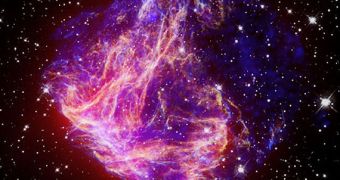Over the next decade, as new-generation telescopes will be built around the world, scientists will need to keep an eye on all datasets that come out of these machines, interpret them, analyze them, and then draw conclusions based on them. But everyone agrees that this is a fantasy, something that will be impossible to do in reality. The amounts of data collected by the new observatories will be massive, summing up to quadrillions of bytes. Only an automated program will be able to peer through all the data, and draw conclusions based on them, scientists say.
This has been the case for many years now, ever since modern telescopes have become common. Observation arrays, such as radio telescopes, also produce massive amounts of data, which are then deciphered jointly by humans and computers. But astronomers say that, in the near future, humans will no longer play a part in the process. They advocate the necessity of designing new types of software that could not only peer through the information at high speeds and discover new exoplanets and black holes (among other things), but also find more widespread, general astrophysical phenomena that were never before observed. This would require exquisite pattern-recognition abilities in the pieces of software.
“The amount of data [from new telescopes] will be overwhelming. The datasets, measured in quadrillions of bytes, will be so large that no astronomer or group of astronomers could fully explore them, much less comprehend them. Computers have long helped scientists make discoveries by processing and analyzing observational data, but now we will need computer programs that also can make discoveries on their own,” the leader of the new initiative, Carnegie Mellon University School of Computer Science Associate Research Professor Jeff Schneider, says. He is also a member of the interdisciplinary McWilliams Center for Cosmology, also at CMU.
“Finding those larger patterns is made difficult by the very nature of astrophysical phenomena, which typically evolve over huge time scales. Most algorithms for discovering dynamic evolution assume that you have a sequence of observations to analyze. But in cosmology, you never get to see things evolve. Instead, you see a bunch of objects that are at different points on the evolutionary path. We need a way to look at those objects and use them to infer the evolutionary path and where each object might be on that path,” Schneider adds.

 14 DAY TRIAL //
14 DAY TRIAL //